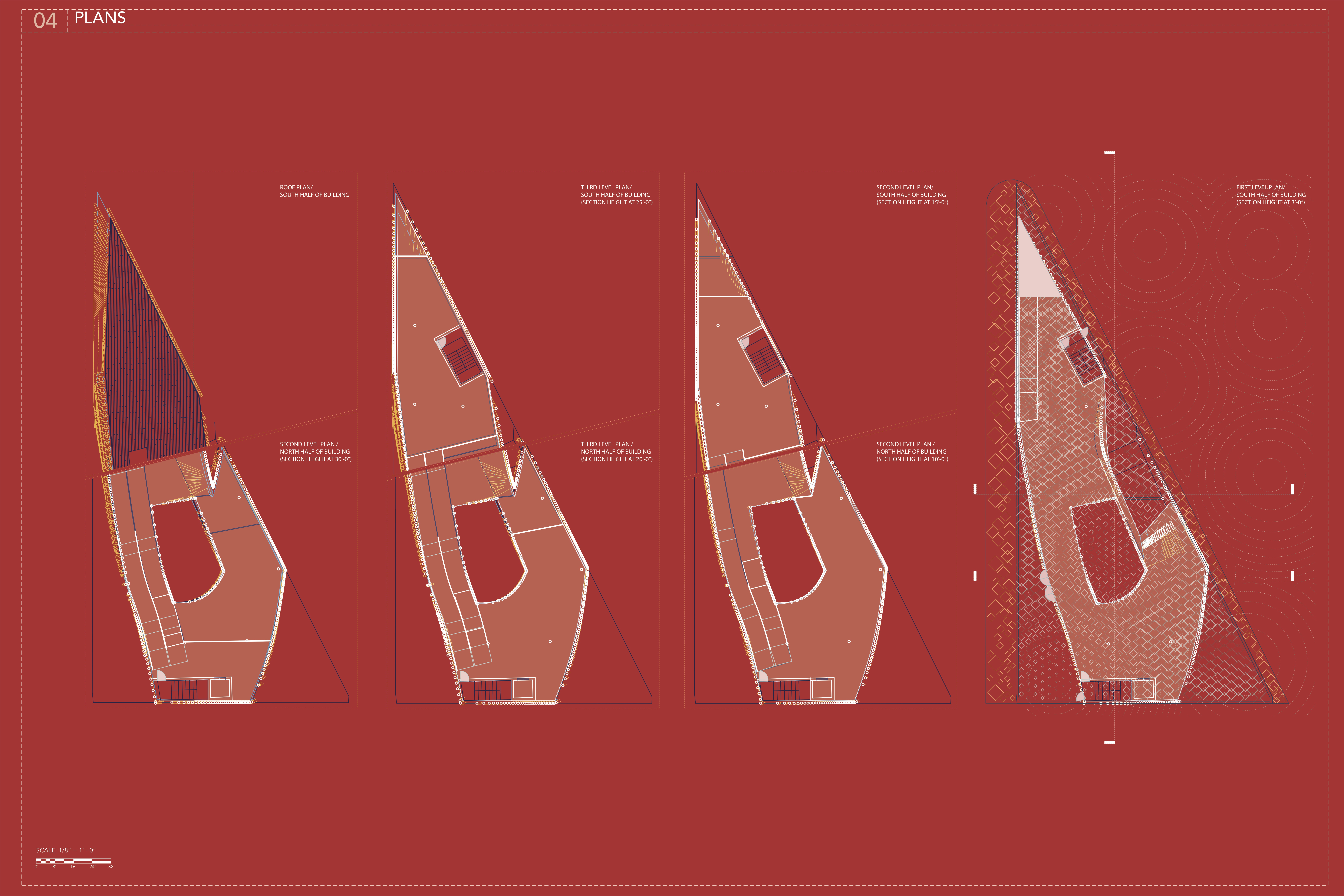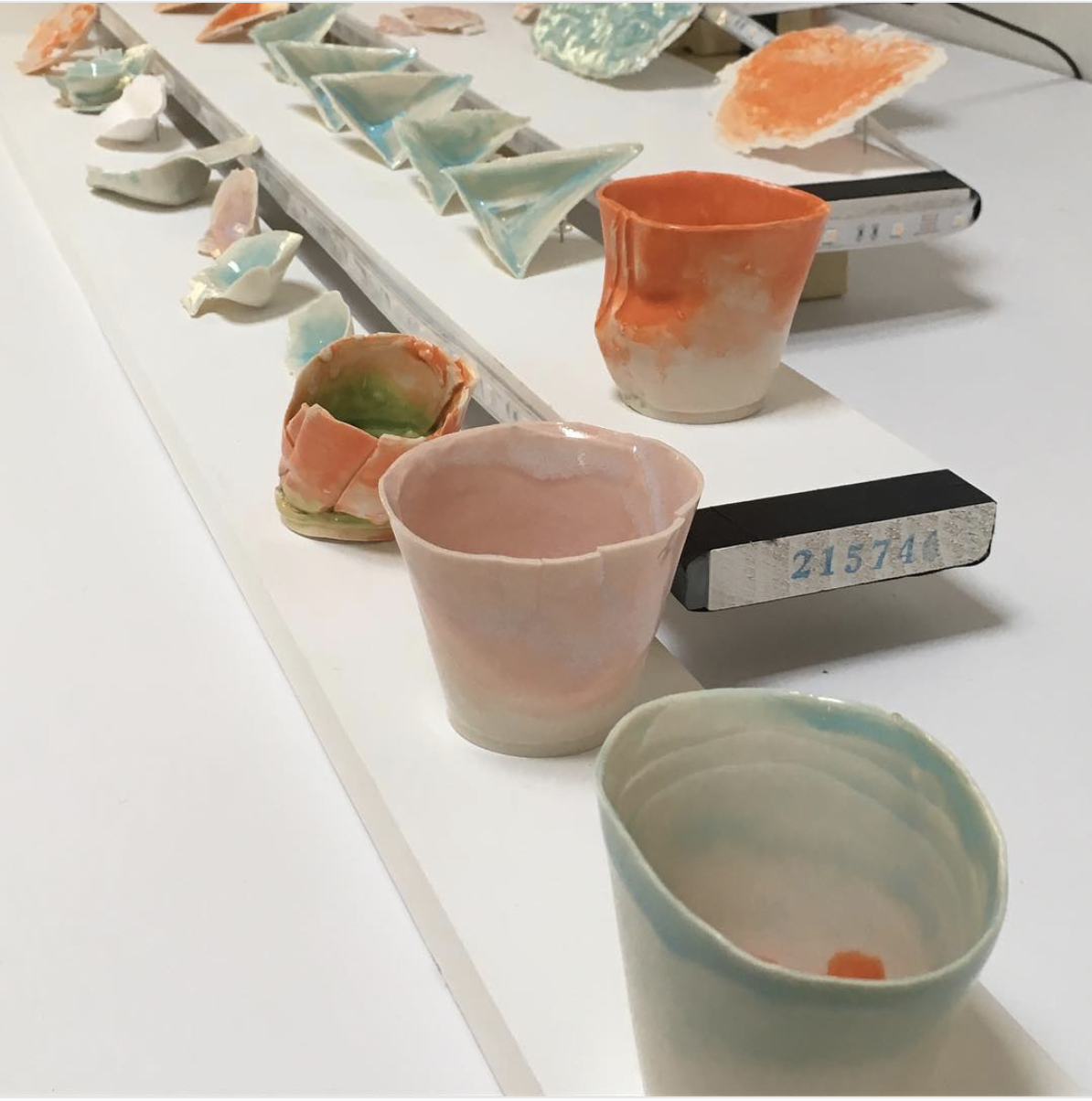
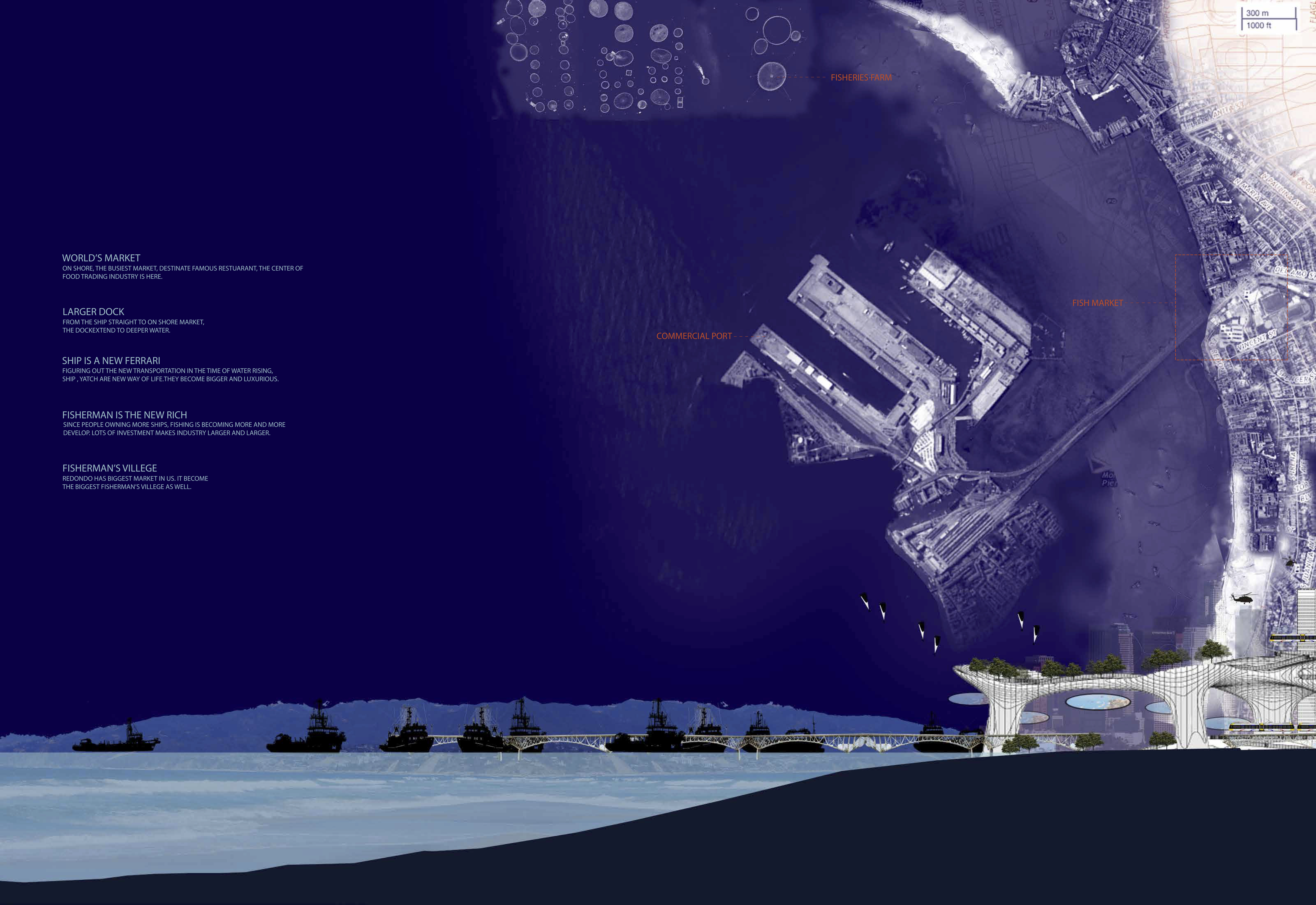

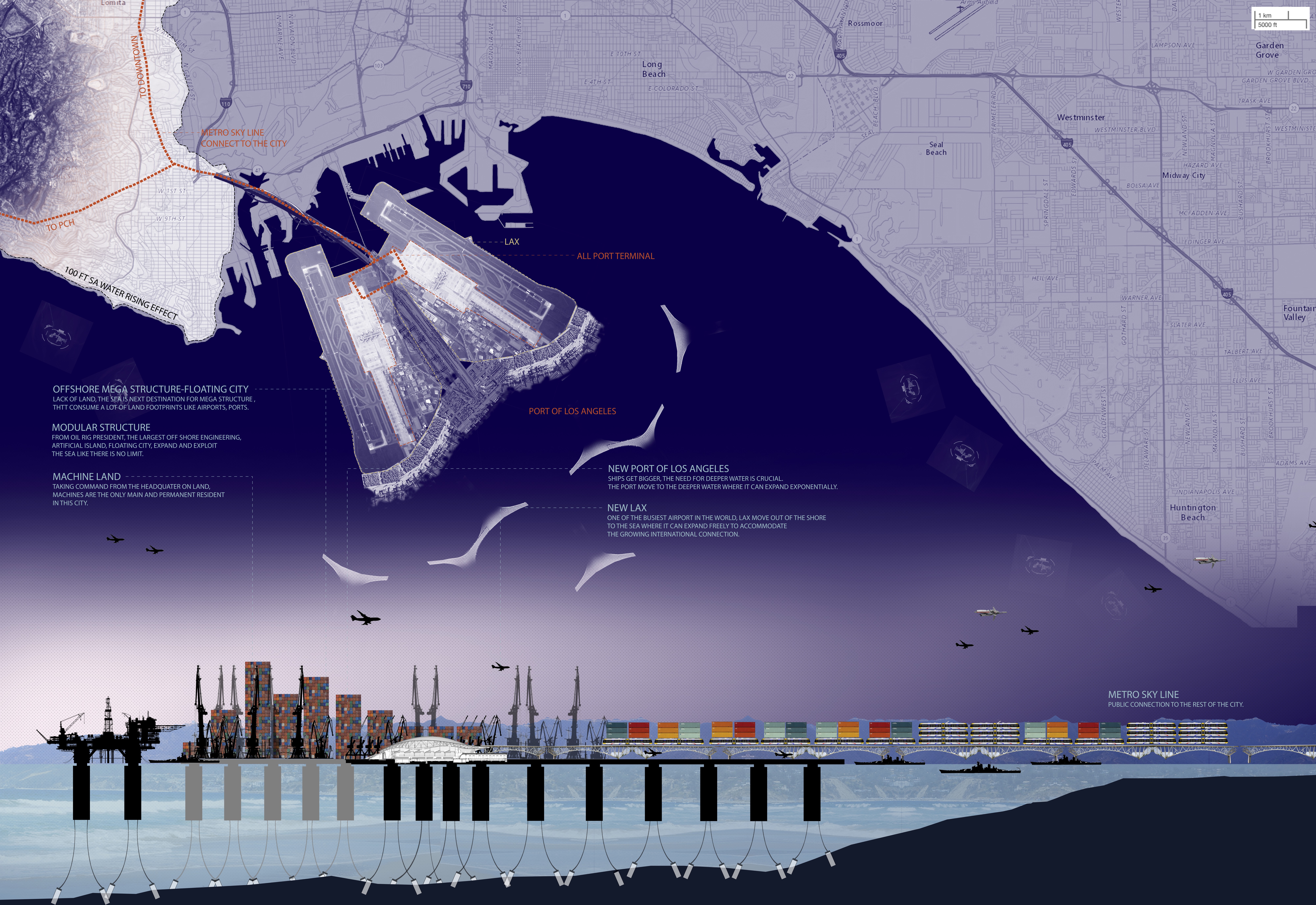
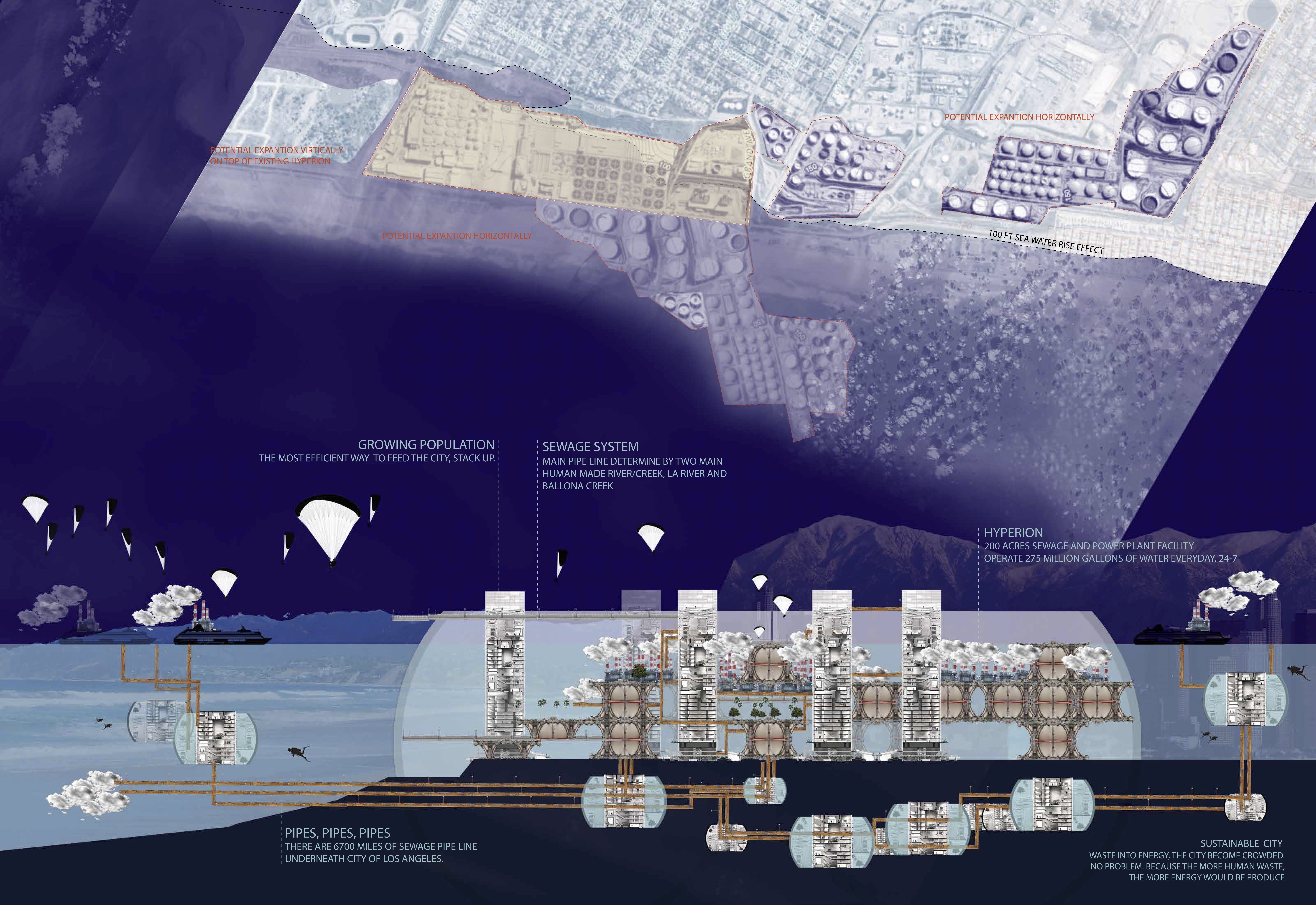


THE LAND OF A THOUSAND STORMS - PROJECT DESCRIPTION
Change has always come - as cycles of storm and calm; as retreat and advance of oceans and ice. Extremes of temperature and fluctuation and dwindling of resources are projected to occur increasingly in the near future. And we will need to adapt our architecture so it can respond to the needs of the future as well as the present.
It is estimated that in 2100 the water will rise 15 feet and by 2500 it will rise by 35 more, along with other changes in climate and population, the consequences of which could occur both gradually and suddenly. This will turn coastlines into lands where the contention between geography, weather and time is accelerated.
In an extreme dystopian scenario that becomes increasingly possible, we have simulated the sea levels rising by 100 feet and flooded the potentially affected Los Angeles beaches. As a response we propose to create a framework for architectural adaptation, focused on a series of responses to hypothetical future coastal conditions: THE SUBMERGED CITY, THE NEW PIER, THE NEW ISLAND, THE FLOATING CITY.
All these typologies address infrastructural developments rather than individual buildings, in an attempt to create a framework that’s suitable for additive, sedimented and organic growth. Just like highways and public transport become arteries along which new growth is encouraged, these infrastructures will foster symbiotic programs that can evolve into a new urbanism of the surf.
Inspired by the sprawling supercity condition that characterizes Los Angeles and by the world’s other megacities, we see the future of the Los Angeles metropolitan area as an amphibian development. A land where infrastructure, as well as commerce and dwelling can occur both on land and at sea, and evolution is both planned and accidental.
Change has always come - as cycles of storm and calm; as retreat and advance of oceans and ice. Extremes of temperature and fluctuation and dwindling of resources are projected to occur increasingly in the near future. And we will need to adapt our architecture so it can respond to the needs of the future as well as the present.
It is estimated that in 2100 the water will rise 15 feet and by 2500 it will rise by 35 more, along with other changes in climate and population, the consequences of which could occur both gradually and suddenly. This will turn coastlines into lands where the contention between geography, weather and time is accelerated.
In an extreme dystopian scenario that becomes increasingly possible, we have simulated the sea levels rising by 100 feet and flooded the potentially affected Los Angeles beaches. As a response we propose to create a framework for architectural adaptation, focused on a series of responses to hypothetical future coastal conditions: THE SUBMERGED CITY, THE NEW PIER, THE NEW ISLAND, THE FLOATING CITY.
All these typologies address infrastructural developments rather than individual buildings, in an attempt to create a framework that’s suitable for additive, sedimented and organic growth. Just like highways and public transport become arteries along which new growth is encouraged, these infrastructures will foster symbiotic programs that can evolve into a new urbanism of the surf.
Inspired by the sprawling supercity condition that characterizes Los Angeles and by the world’s other megacities, we see the future of the Los Angeles metropolitan area as an amphibian development. A land where infrastructure, as well as commerce and dwelling can occur both on land and at sea, and evolution is both planned and accidental.
Will Rogers
Inhabited Pier
Inhabited Pier
Santa Monica
Floating City
Floating City


Northernmost of the Los Angeles shore sub cities, in the high suburbs of Will Rogers, luxury high rises take over the previous rarefied enclosures that were defined by mansions and private land. On the ocean side of the PCH, built over a platform structure extending over the ocean, an exclusive strip of mansions take advantage of the beach access created when the ocean level rose to reach the bluff. The inhabitants of both types of development take advantage of ocean views due to height differential.
At the end of route 99, HWY 10 and beginning of PCH the Santa Monica Floating City emerges - from the ruins of the old pier and beach - as a new touristic and local leisure centre. The amphibious modules allow for visitors to explore the new floating commercial areas as well as the underwater ruins of the old Santa Monica beach from the comfort of a controlled environment. Viewing the underwater ruins also invites visitors to closer exploration through various water sports. Separation is emphasized, but teasing hints of potential adventure can be seen through the transparent barrier, as visitors can see divers and sea life in natural habitat.
Venice/Marina del Dey
Floating City
Floating City
Hyperion/El Segundo
Submerged City
Submerged City


Extreme example of hanging development, the floating city of Venice rises and gives way for locals to colonize beaches or parks that are in constant flux and change. This creates a dichotomy between the regimented architectural supra-structure above and the land below reverting to wilderness. The resulting parkland becomes surf beach, skate park, camping ground and more as it is exposed to the whims of nature and time. This enables and encourages the freedom of expression that is particular to the culture and history of Venice. As time passes, each generation leaves its marks on this ever changing foundation of the Venice superstructure.
In an enclave off the coast of El Segundo, apart from mainland, yet still connected by sewage pipelines, lies the submerged research city of Hyperion. It combines research, recycling and wastewater processing, creates renewable energy from sewage derivative gasses, and turns solid byproducts into fertilizing plant feed. Layering guerrilla gardening, research and wastewater processing elements this facility operates off the grid and exports energy, reclaimed water and food back to the city it acquires its raw material from. The inhabitants are scientists and waste management professionals, who ensure the facilities run uninterrupted, filtering, reclaiming and recycling millions of galloons of water daily.
Redondo
Fishermans Village
Fishermans Village
Palos Verdes
New Island
New Island


Once the waterfront floods, and new piers and beaches take over the waterfront area, Redondo evolves into a fishing nexus. Fisheries are established off the coast, and a large commercial pier is also established. The local seafood economy encompasses breeding, fishing and selling. On shore a fish market is established further inland from its predecessor and larger in scope. Over time it becomes the dominant feature of the area and an attraction to visitors. Urban fabric densifies around it as related businesses are established.
When ocean levels rise, Palos Verdes gradually separates from the mainland until it is only connected to the mainland by a tenuous land strip. As coastland becomes a scarce commodity, this new island is colonized by high rise developments capitalizing on and expanding the existing infrastructure. Roller coaster-like transport systems supplemented by aerial transport ensure fluid transit. And at the heart of this emerging Manhattan-like density among high rise residential and mixed use towers, rests a park encased in glass and protected from the extreme elements.
Long Beach/San Pedro
Floating City
Floating City

Port and airport combine to create a megastructure that replaces both LAX and the commercial ports of Long Beach and San Pedro. Modular in structural composition, this new floating city can now expand to allow for the growing demands of an ever increasing demand for both goods and connections. This city’s main and only permanent residents are the machines that take their commands form operators from mainland control centers. Freight creates an ever changing artificial landscape, while the dynamics of daily traffic agitate both surrounding waters and skies.
Archive of Work
2008 — 2019
Drawings and photographs spanning the last decade of design work (studio and professional) as well as ceramics and photography.
Clara Myers, Architect, Riverside, CA.


